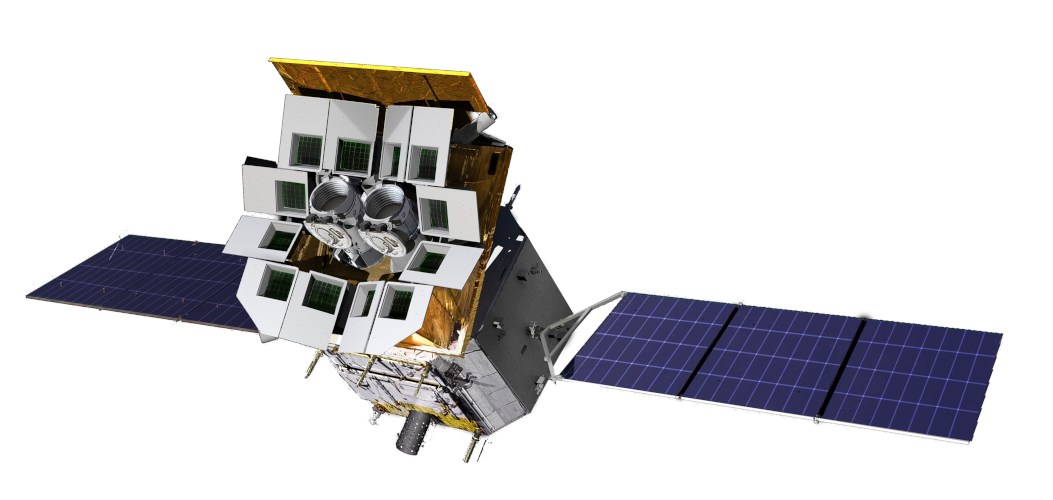
 Credit: CAS; ESA; MPE
Credit: CAS; ESA; MPE
Watcher of the Skies
The X-ray Universe is extraordinarily variable - stars explode, stars are ripped apart by black holes, neutron stars collide with one another, supermassive black holes at the centers of galaxies erupt and produce strong jets of high-energy particles and radiation. Some of the resulting energetic blasts can even affect the earth, so they bear watching. The new Einstein Probe mission is the latest watcher of the high-energy skies. The Einstein Probe, shown above, is a joint collaboration between the Chinese Academy of Sciences (CAS), the European Space Agency (ESA), and the German Max Planck institute for extraterrestrial Physics (MPE). It is designed to look for variable X-ray sources over wide swaths of the sky. To achieve this wide-field X-ray imaging, the Einstein Probe's main instrument, the aptly-named Wide-field X-ray Telescope (WXT), uses a novel system which utilizes "lobster eye" optics. Unlike human eyes, which use lenses to focus light, lobster eyes use long, narrow cells, distributed over a spherical surface to reflect and focus light to a single focal plane. The WXT consists of narrow channels (called micro-pores) over part of a spherical surface to provide coarse imaging over a large part of the sky. Transient sources seen in the WXT can then be quickly localized and studied using the Follow-up X-ray Telescope (FXT), which uses standard X-ray optics to obtain higher-rsolution images and brightness meassures of the X-ray source of interest over a much smaller field of view. The Einstein Probe, launched January 9, 2024, is currently undergoing post-launch activation, and will provide an important new facility for scientists to study the transient, high-energy Universe.
Published: January 15, 2024
<
HEA Dictionary ● Archive
● Search HEAPOW
● Other Languages
● HEAPOW on Facebook
● Download all Images
● Education ● HEAD
>

Each week the HEASARC
brings you new, exciting and beautiful images from X-ray and Gamma ray
astronomy. Check back each week and be sure to check out the HEAPOW archive!
Page Author: Dr. Michael F. Corcoran
Last modified Tuesday, 27-Feb-2024 10:13:23 EST


